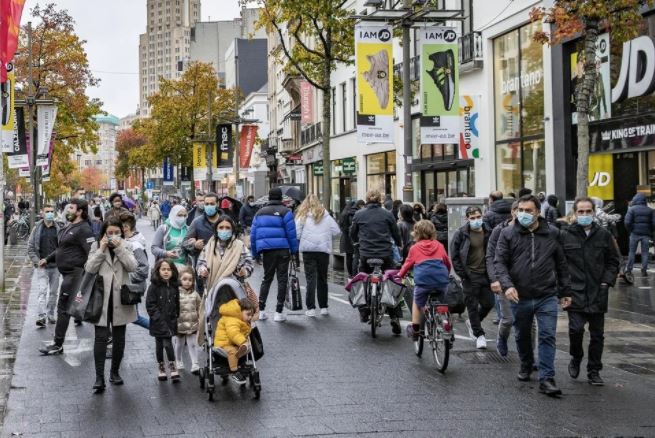In the latest update, Belgium continues to be coloured completely dark red on the travel map of Europe despite the recent improvement of its epidemiological situation. However, many areas have turned a darker red as infections spread.
Belgium first turned completely dark red on the European Centre for Disease Prevention and Control (ECDC) Covid-19 travel map at the start of November, as the number of new coronavirus infections rose in the fourth wave.
Although the situation is now improving, the 14-day infection rate per 100,000 must drop below 500 to be classified a regular red. The figure is currently over 2,000 in Belgium.
Updated ? maps are online!
These maps aim to support the @EUCouncil recommendation on travel measures in the EU during #COVID19 pandemic. Color-blind friendly map in the next tweet.https://t.co/CcBVx6B0o5 pic.twitter.com/Xa1lRrKJeO — ECDC (@ECDC_EU) December 9, 2021
Most of Central Europe, including the Netherlands, large parts of Germany, Austria and the Czech Republic, remain dark red as well.
Meanwhile, several regions in France which were coloured red in the previous update have turned a darker red as the situation in the country remains worrying.
The southern tip of Norway has also turned completely dark red since the map was updated last week.
Three regions that were previously coloured red have now turned orange. These are in Greece, Spain and Italy – which has the most orange regions of all European countries.
Updating travel rules
The European colour codes are an indication for EU Member States to impose conditions on returning travellers, such as mandatory testing or quarantine. The colours are also taken into account for the admission of travellers to their own countries.
Member States cannot impose extra restrictions on travellers coming from a green area, but they could demand a negative test and/or quarantine for (unvaccinated) people coming from orange or red zones.
Related News
- EU countries impose stricter measures, UK's Johnson refuses to play Scrooge
- Closing borders and new travel restrictions: Countries react to Omicron variant
- Belgium imposes entry ban on travellers from southern Africa
All travellers wishing to enter Belgium after more than 48 hours abroad are required to complete the Passenger Locator Form (PLF), regardless of the colour code of the zone they return from.
According to Belgium's rules for travellers coming (back) from red countries within the Schengen or EU area, non-vaccinated people aged 12 or older who do not have a recovery certificate but do have a negative PCR test result less than 72 hours old must get tested on day seven.
Those who are not vaccinated or have a recovery certificate or a recent negative PCR test result must get tested on day one or two after their return, and again on day seven. They can end their quarantine after the first test negative result.
As an increasing number of EU countries are administering booster doses, the EU is looking for a common approach to validating vaccination certificates. This would take into account the additional dose and allow the free movement of people within the bloc.
The European Commission proposed that vaccination certificates will only be eligible for EU travel if a person has received a coronavirus booster shot within nine months of receiving their last dose.

